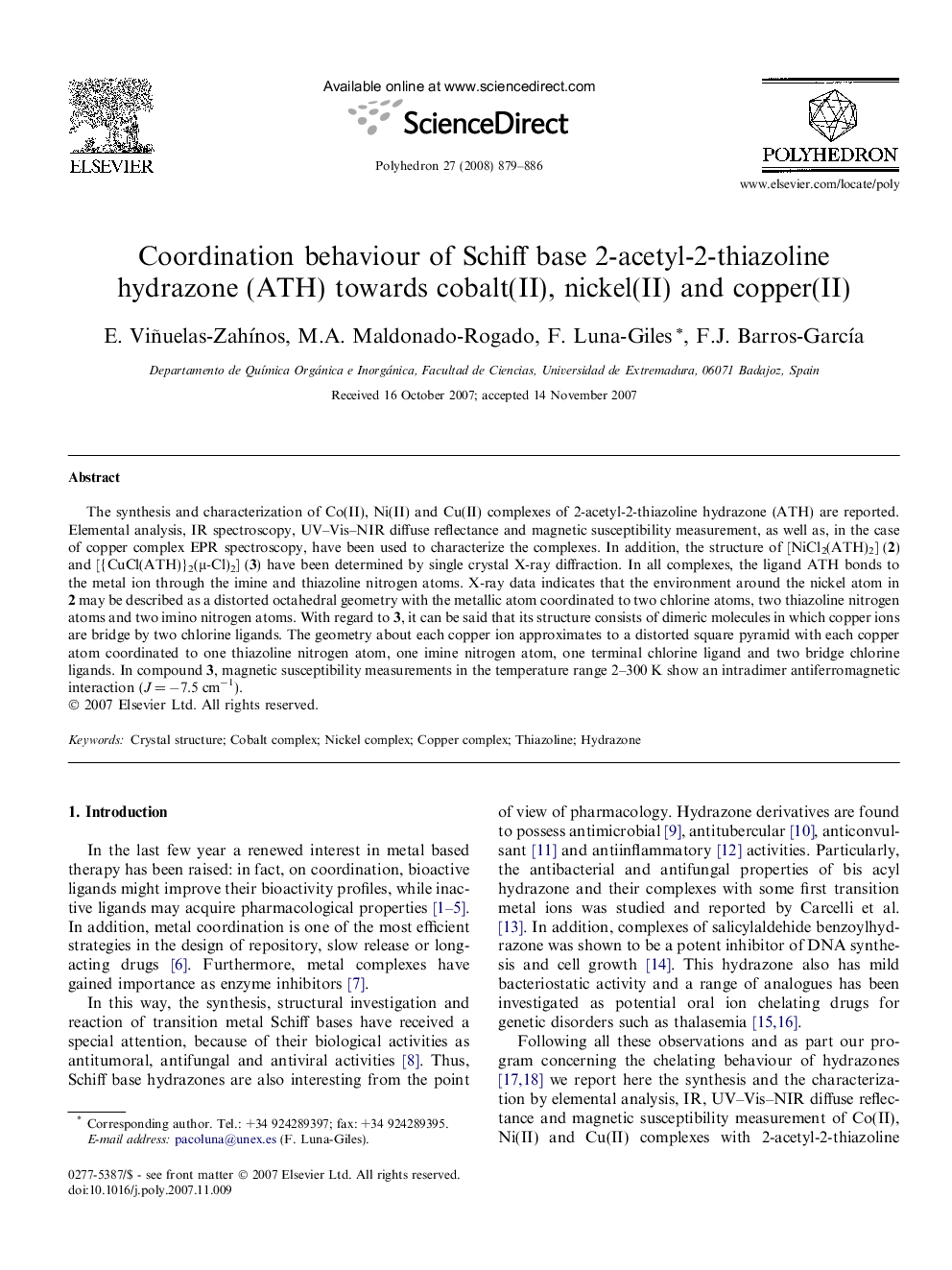| کد مقاله | کد نشریه | سال انتشار | مقاله انگلیسی | نسخه تمام متن |
|---|---|---|---|---|
| 1339673 | 979711 | 2008 | 8 صفحه PDF | دانلود رایگان |

The synthesis and characterization of Co(II), Ni(II) and Cu(II) complexes of 2-acetyl-2-thiazoline hydrazone (ATH) are reported. Elemental analysis, IR spectroscopy, UV–Vis–NIR diffuse reflectance and magnetic susceptibility measurement, as well as, in the case of copper complex EPR spectroscopy, have been used to characterize the complexes. In addition, the structure of [NiCl2(ATH)2] (2) and [{CuCl(ATH)}2(μ-Cl)2] (3) have been determined by single crystal X-ray diffraction. In all complexes, the ligand ATH bonds to the metal ion through the imine and thiazoline nitrogen atoms. X-ray data indicates that the environment around the nickel atom in 2 may be described as a distorted octahedral geometry with the metallic atom coordinated to two chlorine atoms, two thiazoline nitrogen atoms and two imino nitrogen atoms. With regard to 3, it can be said that its structure consists of dimeric molecules in which copper ions are bridge by two chlorine ligands. The geometry about each copper ion approximates to a distorted square pyramid with each copper atom coordinated to one thiazoline nitrogen atom, one imine nitrogen atom, one terminal chlorine ligand and two bridge chlorine ligands. In compound 3, magnetic susceptibility measurements in the temperature range 2–300 K show an intradimer antiferromagnetic interaction (J = −7.5 cm−1).
Synthesis and characterization by physical measurements of cobalt(II), nickel(II) and copper(II) complexes with 2-acetyl-2-thiazoline hydrazone have been carried out. The X-ray crystal structures of [NiCl2(ATH)2] and [{CuCl(ATH)}2(μ-Cl)2] have also been determined. Co(II) and Ni(II) complexes present a distorted octahedral geometry around the metal(II) ion, whereas the copper(II) complex presents a structure consisting of two square pyramids linked by one edge.Figure optionsDownload as PowerPoint slide
Journal: Polyhedron - Volume 27, Issue 2, 6 February 2008, Pages 879–886